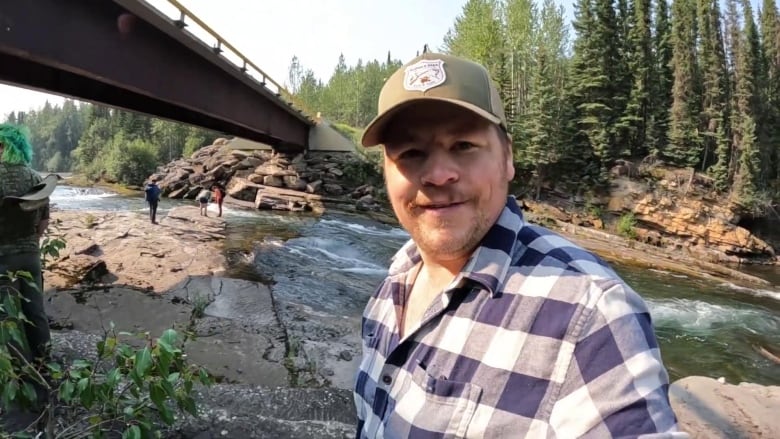
From spending time near riverbanks to fishing and hunting, Sheldon Marion grew up outdoors.
The resident of Hudson’s Hope, B.C., located over 150 kilometres west of Dawson Creek, recently went out looking for something to film for his YouTube channel, Buick Outdoors. He was driving over a bridge in the area when he spotted something that looked like large prints.
He scrambled down the embankment near Carbon Creek, 56 kilometres west of Hudson’s Hope, to find a set of exposed dinosaur tracks that were normally covered by water.
“I was pretty excited,” Marion said. “For me, I’ve always been a bit of a rock hound and fossil enthusiast and all that good stuff. For me to find dinosaur tracks, it’s a pretty cool feeling.”
Marion snapped photos of the dinosaur tracks and submitted them to the Royal B.C. Museum. They were first spotted two decades ago, he says, but never confirmed as a dinosaur trackway site.
Marion says it is now a confirmed trackway site after he took Victoria Arbour, curator of paleontology for the Royal B.C. Museum in Victoria, B.C., on a visit of the area.

“We always appreciate when people bring fossil finds to our attention and it was great to get a chance to check out these footprints near the site we were studying this summer,” Arbour said.
The markings might be a bird fossil print, Marion says. He hopes the area can be protected and the dinosaur track parkway extended.
Marion says he has been working with the Hudson’s Hope municipality and local First Nations to preserve the site for others to enjoy, especially kids.
“I know when I was young, I spent the majority of my life outside on riverbanks, out hunting and fishing. It seems to be that there’s a bit of a decrease in that these days,” Marion said. “There’s a lot more kids playing video games and staying inside.”
“With something like this, it gives them a reason and a purpose to actually go out and check out dinosaur tracks, get outside and get away from the hustle and bustle of cities and just enjoy nature.”
Marion has posted four YouTube videos documenting the discovery, the first of which was published in mid-August.
He encourages visitors not to damage the area and have respect for the Saulteau First Nations land.
“It’s always nifty for me [because] even if I see something like the gravel pit, I don’t just see a bunch of random, stupid rocks – I see millions of years of glacier rock, or something that happened at some point in time.”